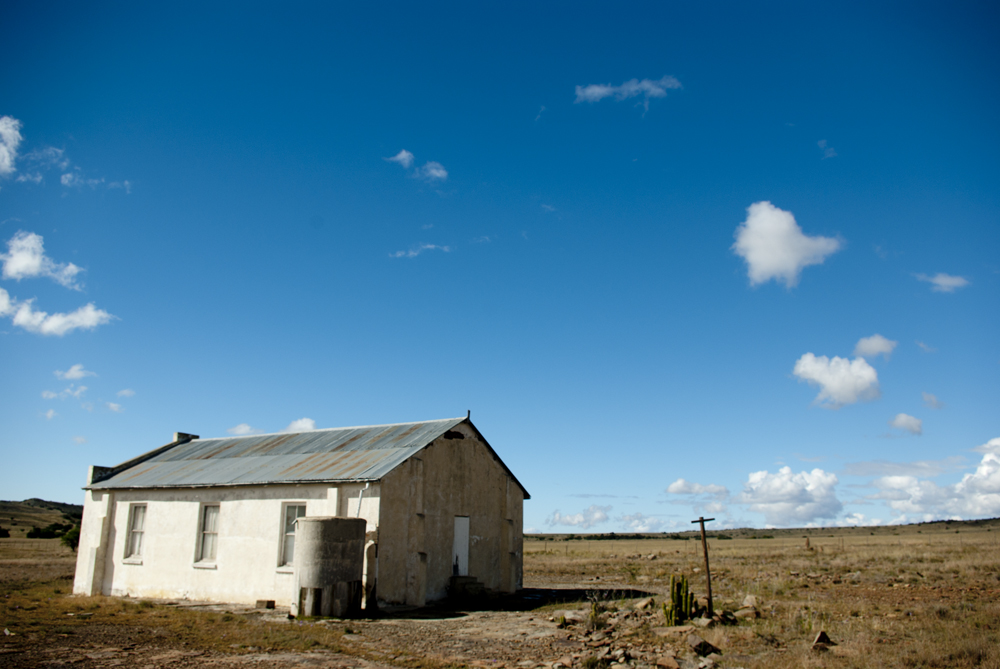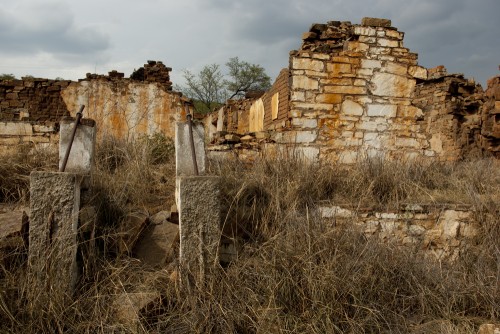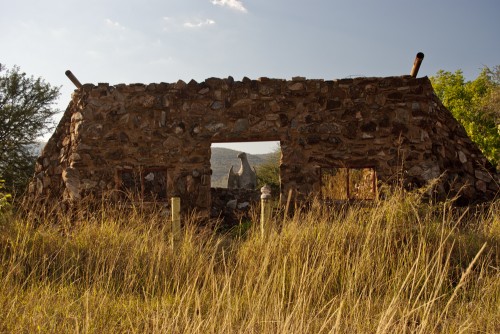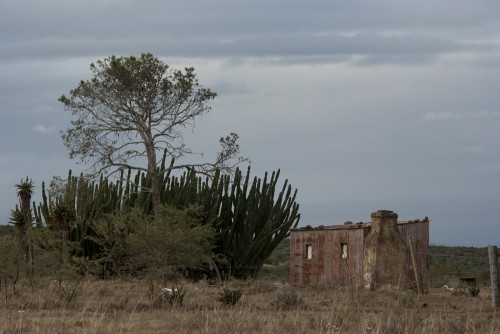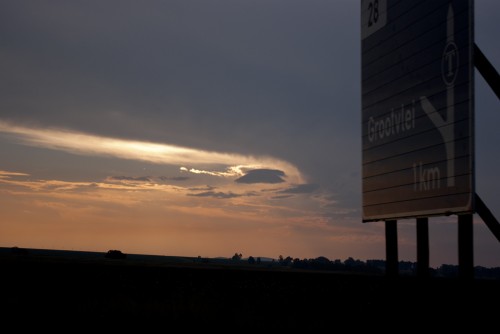South Africans I have traveled with – and people visiting South Africa from abroad that I have met – often remark on the sheer number of contrasts in the country. On the fact that it really feels like many countries in one. Some of the time, these comments are adressed to our unequal (shamefully the most in the world now), still highly raced, human landscape. But in happier times, I’ve heard folk say this of the country’s physcial landscape too.
Frankly, if you come to visit – or if you live here and decide to explore – you are doing yourself a mighty disservice if part of that adventure doesn’t involve getting in a car and driving a span of at least five hundred kilometres. Somewhere. Anywhere. It is impossible to cut a straight line across the country of that length and not see a half-dozen different landscapes, punctuated by artistic, idiosyncratic, or just plain weird buildings and people. South Africa is just kinda cool like that.
This was what I was thinking the other night while flipping through discarded photographs I have taken over the last three years – this during the course of looking for one of a particular ginger cat that I wanted to email to my mother. And still must (crap! I was sidetracked)
Towns with names like Kwaggafontein and Daggafontein. Cheerio, Barrage and Adelaide.
I’ve driven way more than a sampler five hundred kilometres in that time. From Parys to Bedford. Stellenbosch to Vereeneging. And god knows where in the psaces in between. Towns with names like Kwaggafontein and Daggafontein. Cheerio, Barrage and Adelaide.
Adelaide, as an aside, lies in the Eastern Cape and received an erroneously-delivered stash of rare wood from Europe intended for a church in Adelaide Australia almost a hundred years ago. They kept it, and I believe only formally sent a naughty letter of thanks in the last decade or so. These are the kinds of places your fiive hundred kilometres will take you to.
The roads themselves vary, from the quad-lane highways of the N1, 2 and 3 (yes, Africa has giant freeway things) right down to the gritty, weathered concrete-type stuff that they make the secondary roads out of – once in a decade or more. And the little dirt roads that peal off from the concrete, heading to the smallest of the small towns and the tiniest of the farm stalls. The colour of the dirt itself varies from chocolate brown in the highveld to the loamy mid-brown of the Eastern Cape, and almost red in some parts in the Limpopo.
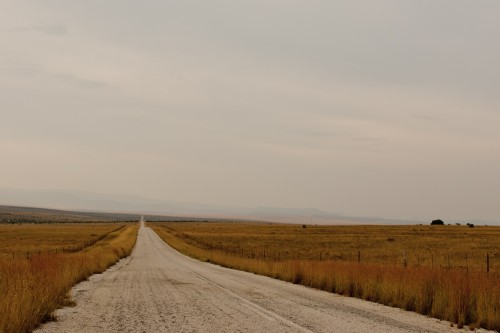
That concretey-tarmac-stuff that secondary roads get made of in the Eastern Cape. It's the colour of a cloudy sky and lasts forever.
If you pay attention during your driving, you will also discover that South African roadsides – and particularly those in the Eastern Cape, Mpumalanga and Karoo areas – are absolutely ridden with interesting structures just waiting to be explored. There was a time once – before I knew I would study journalism and end up spending time in Grahamstown – that I found a town hall sitting in the grass on the way to Nieu Bethesda. Inside was a piano under an inch of dust, a newspaper clipping about a (presumably) local kid who made good, and chairs arranged as though someone closed the place up as they always had one day and then simply never returned.
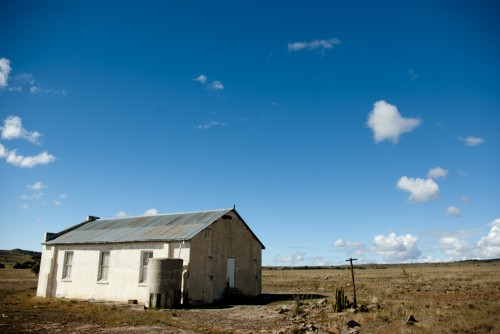
Days gone by. An empty hall on the roadside between Bedford and Cradock
Not all the houses are so intact. Others – particularly the early and the historical – have often come tumbling down into ruins. Only fragments of blue and white porcelain and thick shards of blue glass in the dirt and gravel around them remember the people who once lived there.
And then there are other times, where you look out the window, arch an eyebrow and engage the brakes. Because you have seen some truly weird shit that defies any easy explanation. Way north and east, between Lydenberg and Sabie, there is the shell of a stone-walled house, inside which lives a giant stone eagle. With no indication of who put it there, or why.
And then there are houses in remote valleys, on top of mountains, or simply in the middle of nowhere. Tiny little cottages clinging to vast landscapes. People-protecting barnacles that refuse to be dislodged by the storms that stretch for miles or the snows and baking heat that follow them each cycle of the year.
Other times there isn’t another sign that humans ever existed for what feels like hundreds of kilometers. Landscapes that look pretty much as they always have.
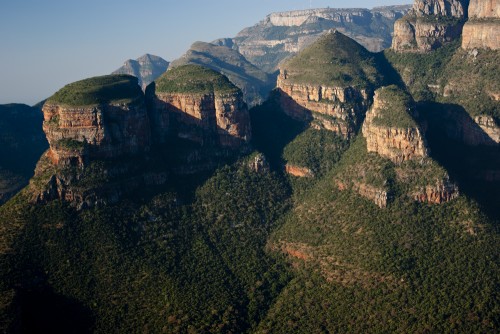
When the journey ends and you get to look out, the view can be incredible. Three Rondavels in Mpumalanga. Yes, there is actually a place that you can stand and see this. Helicopter not required.
And then, when you’ve finished with the driving – because you have arrived; because you can no longer stand the smell of fast food packets in the car; or because some madman tried to shoot you – you can look to the sunset for one last view. Like the sand on the roads, the colour and texture of the sky will be different in every new place you see it from.
Yes South Africa. You are as beautiful as you are crazy, and I am ever so glad that I get to drive across you as often as I do.

